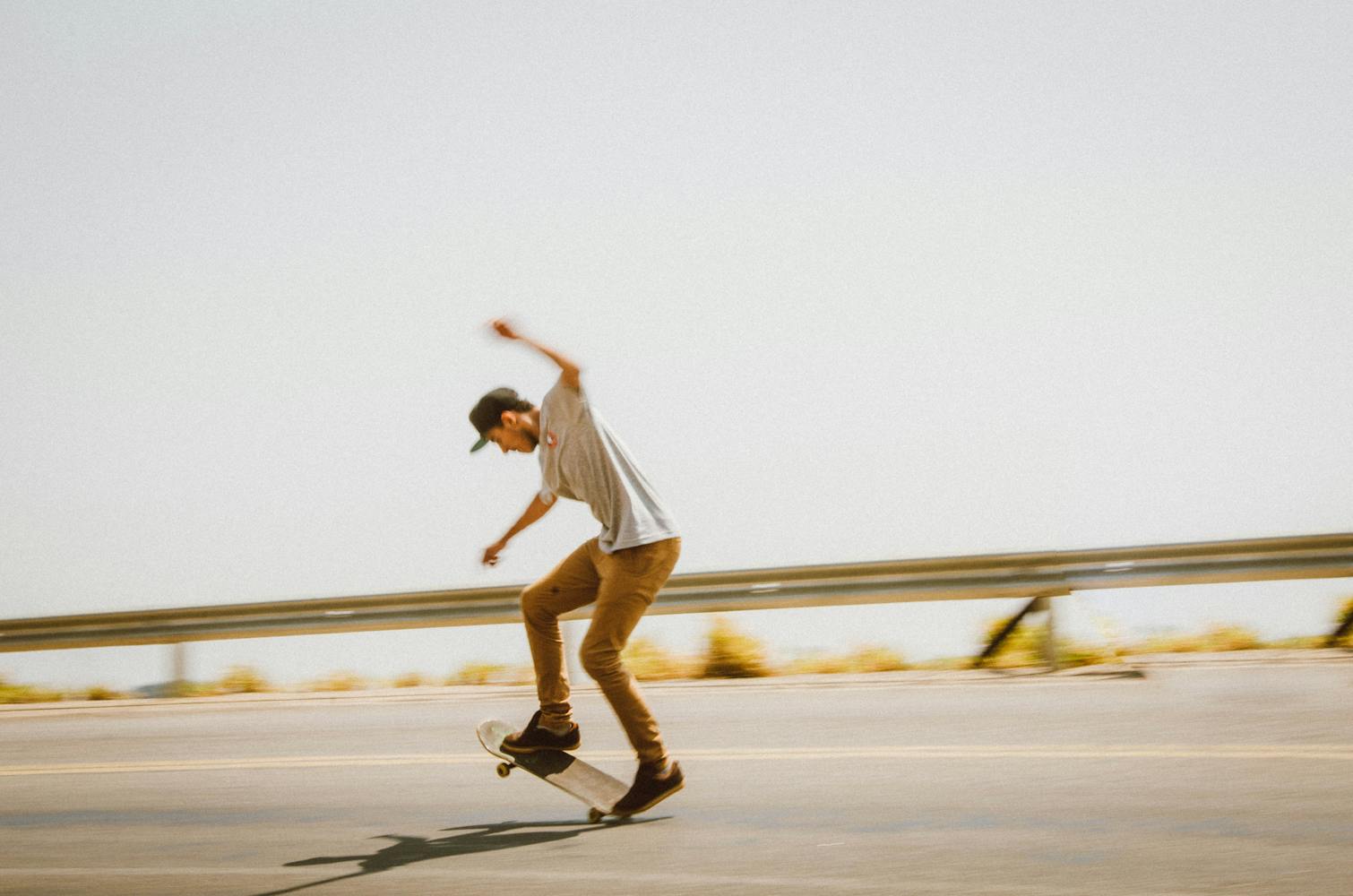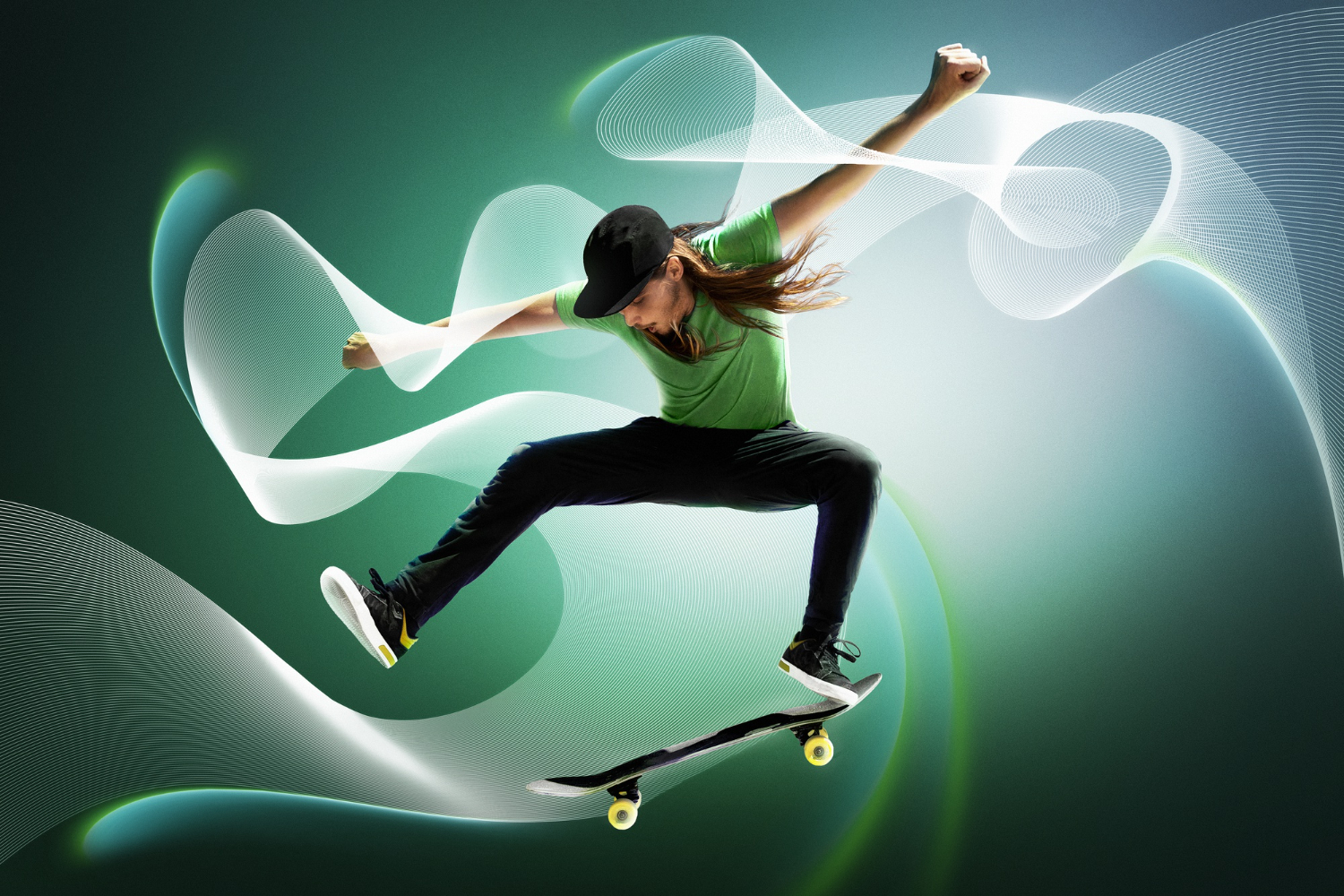Skateboarding is an exciting endeavor, whether you’re looking to get a new form of exercise or want to blend in with others at the skatepark. However, one of the hardest parts of skating is at the very beginning – how can you stand and balance on a skateboard? It’s much harder than it might seem by watching professional skateboarders.
If you’re interested in learning more about how to stand and balance on a skateboard, you’ve come to the right place. The more you know about how to prop yourself on a board and remain confident in your stance, the easier it will be to master the basics of skateboarding. Read on to learn more about how to stand and balance on a skateboard with ease.
Table of Contents
ToggleFocus On A Comfortable Stance
Before you can tackle any exciting tricks, you must learn to stand on your board. It should be comfortable and practical for your body, which will differ depending on the person riding the skateboard.
Let’s dive into a few of the most effective ways to locate a comfortable stance for your body. From facing the right direction to pointing your head in the way you’re headed, even the smallest items make a big difference.
Pick Your Direction
First, pick a direction to face while on the skateboard. You can either face the regular or goofy side – left or right. Regular places the left foot at the front, while goofy puts the right at the front. It’s helpful to determine which is best based on whether you’re right or left-handed.
To find the right direction:
- Test out both positions to see which makes you more comfortable
- Consider which you’d prefer to have forward while going down a tall hill
These will make the answer clear.
At the end of the day, only you know which direction is most comfortable. Try them both to see which fits you best.
Place Your Feet
Once you have the direction down, it’s time to place your feet. Ensure they are the width of your shoulders apart. Keep as natural of a stance as possible and distribute the weight between both feet for the best results.
One great technique is to push your weight from one foot to the next. Eventually, it will be easy to sink into the position of skateboarding naturally.
Bend and Sink
With your feet comfortably in place, bend your knees and allow your body weight to sink into the board. You’ll be able to center your weight, which will make you more confident on the board and will make it much harder for you to fall off.
Here are some tips for this step:
- Don’t sink too deep or you’ll worsen your balance
- Loosen your ligaments to make balance much easier
These will help you relax.
The goal is to center yourself and provide stability. It might take a few times to master the bend and sink on your skateboard.
Point Your Head
Finally, take care to point your head in the direction you’ll move on the skateboard. Many newbies tend to look off to the side, lining up their chin with their chest. This technique is not only impractical, it will make it much harder to balance.
Turn your head and ensure your chin points to where you want to go. Don’t look at your feet, even though it will be tempting – obstacles could cause you to take a nasty tumble if you don’t see them.
Keep Your Balance
Once you know how to stand up on a skateboard, you must be able to balance on it. Balance is key – without it, you’ll never be able to do more than scoot down the sidewalk at a snail’s pace. Tricks and speed require balance.
Let’s jump into a few of the best ways to retain excellent balance on a skateboard. It will take practice to balance, but you will get it with enough time and effort.
Step With Care
First, ensure you step onto the board with care. Put one foot on top first, ensuring it’s firmly planted before making any effort to lift your second. When you do lift it, do so quickly and with extreme caution to avoid falling.
Here are a few more things to keep in mind:
- Avoid going too fast or too slow
- Be prepared to fall a few times as a beginner
You might take a few tumbles before success.
Keep a helmet on at all times when stepping up on a skateboard, especially as a beginner. If you fall, you want protection if you hit your head.
Place Feet Over Trucks
Once on the board, your feet should be shoulder-width apart. Ensure they are over the trucks, which are the metal shafts under the board that hold the wheels in place. These are a solid distance apart and offer the most support anywhere on the skateboard.
Most of the time, the trucks on a skateboard will be about shoulder-width apart. If you’re unsure of where proper placement is for your feet, rely on these items for the best shot at success.
Use the Balls of Your Feet
Always put your weight on the balls of your feet to remain as stable as possible. This positioning will make it much easier to adjust your stance if you’re going downhill or about to participate in a trick.
Here are some things to keep in mind:
- Avoid remaining flat-footed, as it will feel awkward to move
- Keep off your tip-toes to avoid falling as often
There is a perfect middle balance.
Again, it will take time to perfect putting your weight on the balls of your feet. Shift forward and stop when the weight is on the portion of your foot that rests right before your toes.
Make Tiny Adjustments
Finally, make adjustments as you go to retain your balance. This technique should be easy if you’re on the proper balls of your feet.
Your ankles, knees, hips, and feet will all play a role in making minute adjustments along the way. Always consider this on the go, avoiding moving forward or backward too much or moving your feet and body off the board while in motion.

